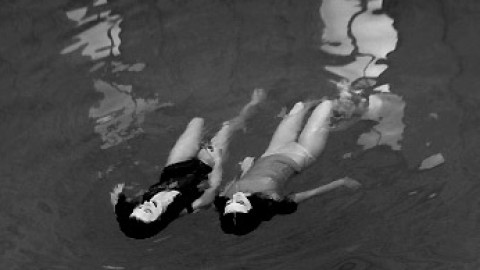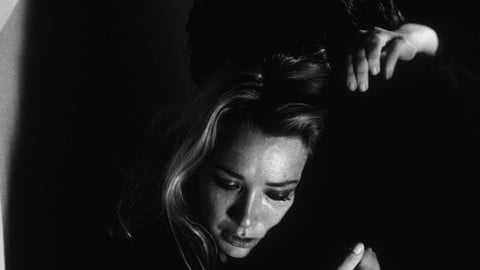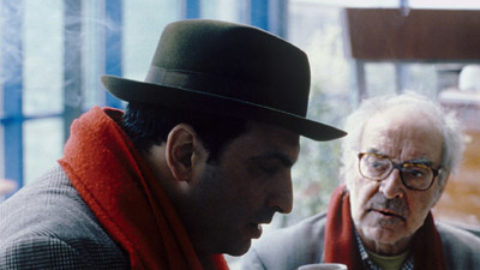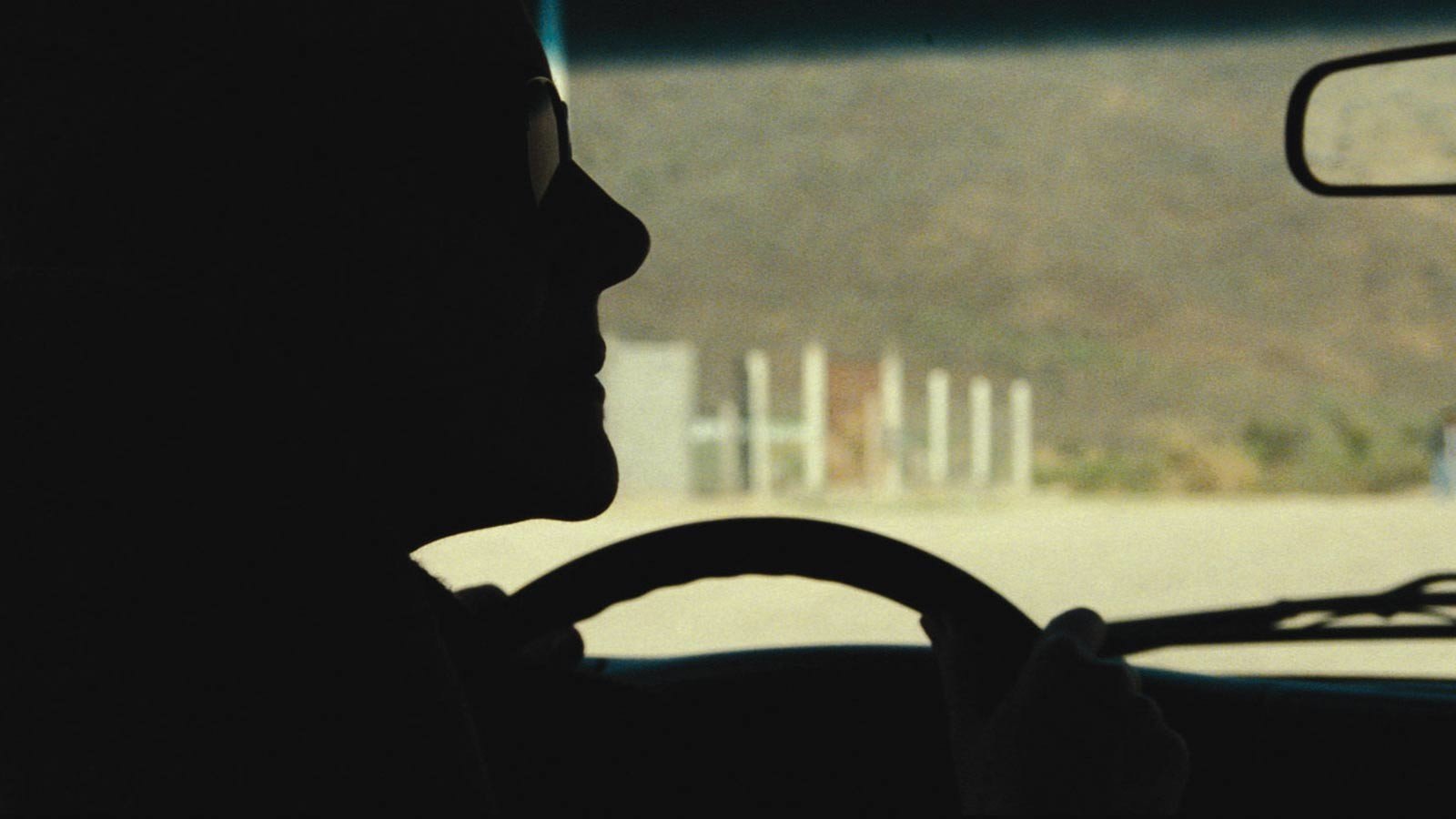
Interview: Lucrecia Martel
This interview took place in October 2008, when Martel was in New York for the screening of The Headless Woman at the New York Film Festival. A translator was present. Taubin asked her questions in English, which Martel understands perfectly. Martel answered in Spanish; this text is a translation of what she said.

The Headless Woman is a very strong film and a difficult one. In terms of its structure, it seems very different from your two previous films [La Ciénaga and The Holy Girl].
I think that the first two films are also very different from each other. So I can’t really say how this one is different from the other two because it’s not as if the other two had a common structure. What I did achieve in this film was to polish up my technique of working with layers. I always have a layered structure, and in this film I found the cleanest way of working with it. And also, the format I used was perfect for what I set out to do. I regret not having used it before.
You mean the ’scope-width screen?
Yes.
For me, the obvious difference is that The Headless Woman is focused on one character’s subjectivity.
That was the greatest challenge. I felt I was really taking a chance with that because I had never worked following just one character before.
But then, I don’t quite understand what you mean by layers. When I think of layers, I think of layers of plot and of characters.
What I mean by layers is a form of accumulation, which makes plot no longer necessary in its classical sense. I work with a number of elements that are tied together, and each one of them is present in each scene in different positions, different perspectives, foreground or background. For example, the accident is present in every scene in different forms: maybe there is somebody who is digging, or something that is thrown on the floor. So I’m not spelling out the accident thing, but I have elements that evoke that. This way of working, which is my form, was a lot easier to pull off when I had a large number of characters. With just one central character, it was a lot more challenging.
For me, the film is a kind of thriller, in the sense that in every scene you’re looking for clues in order to figure out what really happened in the accident.
I agree.
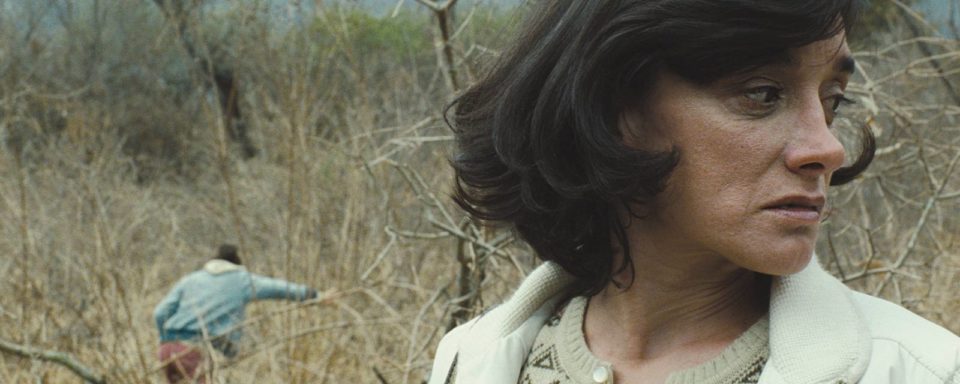
There’s always this doubt. Did she or didn’t she run over the boy? When I saw the film a second time, I began looking for clues in the very first scenes. For example, I wanted to see if the handprints on the side window that we see right after the car hits something were made by the children who are playing near the car in the scene that introduces Veronica.
Actually, the prints on the car window are the prints of the kids that were playing around the car and not the prints of the dead child. But to me, what was important or relevant wasn’t finding out whether she actually killed somebody but her reaction to what happened. I wanted to focus on her human behavior, her human reaction to the possibility that she may have killed somebody, and it doesn’t really matter whether she did or not. What matters is her attitude toward it; in her heart, she killed him. And it’s how she reacts to having done such a bad deed. And that’s what I find extremely interesting, that human behavior doesn’t depend on the truth of the act, on the facts of whatever was done by the person.
But in order to represent the accident, didn’t you have to decide whether the child was killed. For example, the second time I saw the film, I heard on the soundtrack what could have been a stone on the road or what could have been the child. Did you have to decide which it is?
What I thought was that it is possible that she may have hit the child and then he fell into the canal, and the water from the storm dragged his body to where it was found. But it’s also just as legitimate to think that she hit a dog and the dead child just turned out to be there for totally different reasons. So when I filmed I tried to bear in mind that both were equally possible.
But nevertheless it is immoral that she doesn’t go back to look and to see what, if anything, she hit with the car.
Yes.
It’s potentially a hit and run.
That’s really the point. If a person has even the slightest doubt about having caused great suffering to another human being—and in this situation it’s a matter of life and death—the fact that this person would choose not to stop and find out what really happened, well, it makes them less than human. So to me that’s the key issue. Actually, I believe that this mechanism is constantly at work. It’s a mechanism whereby even in the most basic social interactions people tend to deny responsibility. Instead they attribute whatever happens to an entire social class or to the nature of things, so that they can ignore the suffering of others. They tend to say that’s the way things are, that’s the way history has made it, that’s the way the laws of nature have made it. That way of avoiding social responsibility makes us less interesting as human beings. Why is it that in our day and age, we have this belief that there’s nothing we can do at an individual level to change things? Why is there so much fear of taking individual responsibility for larger-scale problems? I don’t understand that. I believe that’s really the evil of our times, it’s the main problem of our times.
Are you saying that individuals refuse to engage with large-scale social problems because they feel overwhelmed?
I think that in the film I show a social mechanism, which in itself could be really beautiful and fascinating, but at the same time is really frightening. And that’s the mechanism whereby a social group as a whole tries to alleviate the suffering of one of its members. They gather together and cover up what happened in order to protect one of their own, even though it is possible that the person has committed a crime. On the one hand, that is beautiful in terms of human support, but it also contains all the roots of what’s evil about a social class: hiding facts, crimes even, and it leads to racism. It is the psychological basis of racism.
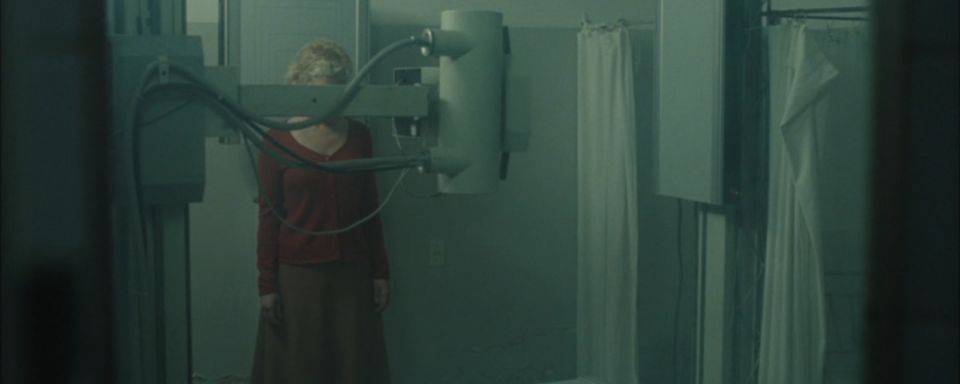
On an individual level, I think that the mechanism that you’re dealing with, in the Freudian sense, is disavowal. Veronica knows that she’s done something terrible and yet she doesn’t acknowledge, even to herself, that she knows, and gradually, the thing she won’t acknowledge becomes less and less troubling to her, until toward the end of the film, she dyes her hair, thereby becoming a different person who knows nothing about the incident in her past at all.
Yes, I think it’s like that.
Disavowal, as opposed to repression. Because in disavowal, you know, but you refuse to acknowledge that you know, to yourself.
What I believe is that an individual will not come out from a situation like that unscathed. This woman is going to carry this on her back like a corpse, like a bag of bones, forever. In Argentina, my country, I see people that still carry the weight of the really bad stuff that they did not denounce back when it happened under the dictatorship. A lot of people decided they didn’t want to see, they didn’t want to know what was happening. And now the same process is occurring, but it’s in relation to poverty. A lot of people pretend they do not see that a huge part of the country is becoming poorer and poorer and is undergoing great suffering. And what we try not to see is that the entire legal system, health system, and education system are structured by social class. Or like a caste system. For example there are diseases that, for a person of my social class, you’d be in bed for three days and get well, but in another social class, you’d be dead in 24 hours. The same mechanism that we used in the past to ignore the suffering of others is still very present today. That’s why in the film, I use music from the Seventies at the same time that people use mobile phones and drive contemporary cars. What I wanted to stress with these elements is that the same mechanism that started back then is continuing. So I use anachronisms to create that continuity.
I’m not so sure that will register with an American audience. For example, the hair—some people wear their hair long today, some people don’t. In New York, if you go into a cool shop, you’re just as likely to hear Seventies music as contemporary music.
I understand what you’re saying very well, but for people my generation or older, listening to a song like “Soleil, Soleil” takes us back to the dictatorship. It was the music that people who were not participating politically—who ignored the dictatorship—would listen to. Of the three films I’ve made, I believe this is the one that is most tightly connected to my country, and to regional issues. When we worked on subtitling, we decided to cut out a lot of the material that would have made the film just too heavy for an English-speaking audience, or any foreign-language audience. Having said that, I also believe there are a lot of general elements that would apply to any country or society.
Absolutely. In the U.S., we are living through this terrible war that we caused, and we are totally disconnected from it. Since 95 percent of the people in the U.S. have nothing directly to do with the war, they’ve effectively put it out of their consciousness. Except of course that it’s wrecked the economy. That’s why no one wants to go see movies about Iraq.
I saw The Hurt Locker by Kathryn Bigelow in Venice, where I was on the jury. The director is a very, very talented woman, and so I was surprised that there was so little reflection on the war in this film. This is a very intelligent North American woman, she sets out to shoot a film on war with soldiers, and her main message is that “War equals drug.” I believe that the film represents a huge effort on her part to not want to see what war is all about. Not wanting to see, not wanting to realize what’s going on, seems to be the basis of bourgeois education. [If I had seen The Hurt Locker before this interview, I would have questioned Martel more about her position.]
Class difference is very important in all of your films. There were characters like Veronica in your previous films. In La Ciénaga, there’s a middle-aged woman who’s oblivious to everything in that household. People take care of her, she doesn’t take responsibility. But she is one of a dozen characters. In The Headless Woman, however, Veronica is the center of the film. If as a viewer you don’t want to identify with her or don’t like her, you might resist the film. You might feel very distanced from it. Did you mean that to be the case?
I cannot say whether it would be better or worse for the film for the audience to feel more attached to her.
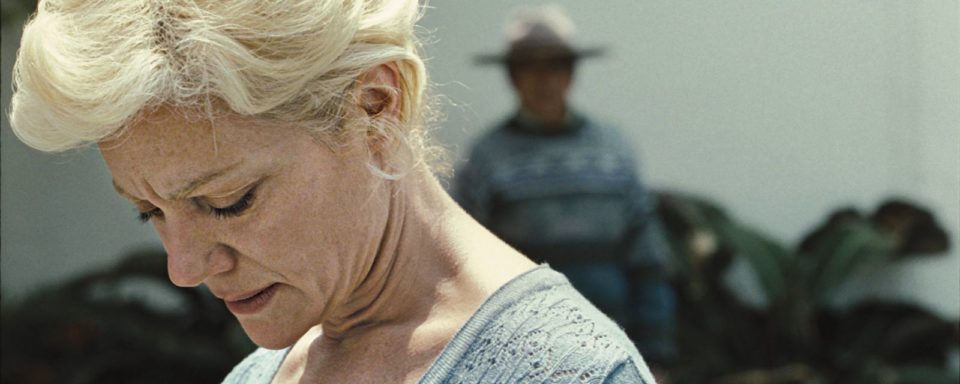
For me, the first time I saw the film, my reaction was that I don’t want to spend time with this woman, I know what she is, she’s reprehensible, I know her problems, I know why she’s a problem. So I went back to see the film again just to make sure I hadn’t missed something, and my reaction was very different, because although I still don’t like her, I can’t say anymore that I’m nothing like her. It’s a matter of degree. Yes, she does something very bad, but I do things everyday that to a certain degree are parallel to what she does. And I think that’s what makes the film difficult. One doesn’t like to admit that.
I think that when there are characters in films that one tends to identify with and sympathize with, that can be really tricky and damaging, in a way. There are some characters in films that do really bad, nasty, mean deeds but somehow they’re shown so that the audience identifies with them, and feels relieved of the problem of what they’ve done, without really dealing with it or thinking about it. I believe that can be counterproductive and potentially damaging. But I’m not 100 percent sure about what I’m saying. It takes a lot of time to assess the extent of a character’s impact on people, and it’s difficult to establish whether the treatment of a character was positive or negative. That’s something that requires a lot of time and distance.
Maria Onetto, the actress who plays Veronica, is wonderful. Does she usually play this kind of role—a person who is present and absent at the same time?
She is famous for roles she’s played on TV. She played a crazy woman with a lot of issues. But the main reason I cast her is that she is all about mystery. Maria has a mysterious attitude about herself in real life as well, and she has this really subtle way of dealing with emotion, and I was really interested in that. But also I cast her because of her physical characteristics, because she is so tall and white-skinned and blonde, and I thought that these physical features made her stand out from the people she interacts with.
One of the things that I have learned from watching your films is that the signs of class privilege are different in Argentina than in the U.S. If you showed a New York woman getting a massage in a bedroom that was so small that she had to lie on the floor in a narrow space next to the bed, that would signal to the audience that these were poor people, not upper-middle-class people. The gap between the rich and the poor is enormous in the U.S. as well, but lifestyles are different. People don’t have healthcare, but they have big houses. People don’t know where their next dollar is coming from, but they have a big house, a big car or two, an entertainment center.
But the people in the film are not so rich. They’re just a little more than middle class, but in Argentina, they don’t have the same level of consumption and consumerism as in the U.S.
But in your films they have servants, people taking care of them all the time. Here you have to be very rich to have a full-time person to cook or clean your house.
It may be because of that that you think it’s meant to be a higher social class than it actually is. For example, in Argentina, I have a cleaning lady who comes to clean my apartment once a week. And any middle-class woman in Argentina has a cleaning lady. The problem is that in the North, where my films are set, it’s not seen as a job but a servant-type thing. In the upper middle class, they see people who work in their homes as servants, they don’t see them as employees who have a job to do. They expect these people not just to do their job efficiently but also to be affectionate toward them and have an emotional connection. I find this funny: whenever social classes are so closed in on themselves, incest becomes a sort of key—it’s as if they are in love with themselves. That’s why there are all these interfamily relationships in my films. My films are not intended as documents of reality as it is; they are constructions that I’ve made. I always find it fun to see how people are so closed off and so into their family because they’re so into themselves. It’s so ridiculous.
Are you saying you make social satires?
There are a number of elements in my film that are not exactly satirical, but they are indeed exaggerated. This film does go in that direction. For example, there is this elderly woman who’s bedridden and she’s watching a short video of a wedding that took place years ago and she sees relatives who are dead as if they were alive. That’s the kind of element that is stretched beyond realism. I cannot say my films are naturalism. There’s a genre in Argentina where you show the outfits, the habits, pieces of life, trying to show how people live. It’s ethnographic but it’s fiction.
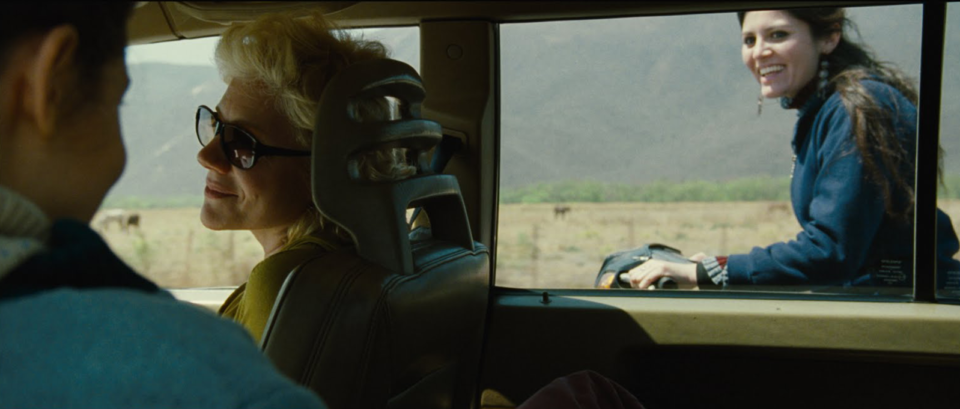
And that’s not what you do?
No, I think what I do is really “false.” For me, a film is not just storytelling but an attempt for me to share some perceptions with the viewer. A film for me is a mechanism to show thought, but I interpret thought as a mix of perception and emotion. In the world of cinema, in particular of cinema students and writers, there’s this idea that cinema is about storytelling. I don’t share that view. I believe that cinema is a lot more than that; I believe that storytelling is just the starting point; it’s like a device you use to share a lot more than the story itself.
In the note you wrote for the press kit, you say that when you have nightmares, it’s always that you’ve killed someone. In one dream you describe you’ve murdered a man and put his head on a shelf, and your father knows what you did and leaves you a note that he has “arranged your shelves.” Someone might analyze it as a dream about guilt and complicity. By recounting the dream, are you implying a direct personal relationship Veronica and the film?
In many ways, yes, but I don’t believe that this dream of mine is about guilt as such. And in the film, the main issue is not guilt. Because I believe guilt, as such, does not really explain anything. My dream is about the possibility that even though someone has made a big mistake, the rest of that person’s life is not necessarily shaped by it. And somehow with the help of others, the person can overcome the consequences of the negative act that they’ve committed.
And then how does that relate to “the bag of bones” that you mentioned before?
When I talked about carrying a bag of bones on one’s shoulders, that’s not guilt for me. I think that’s something that causes a person’s life to shrink, something that limits the person. I don’t like to talk about guilt as such because I believe the idea of guilt does not allow us to understand anything. So the bag of bones doesn’t mean that you have guilt on your shoulders, but it means that all of a sudden your life becomes restricted, and your power of action, or your power of becoming what you’re meant to become, is all of a sudden undercut and limited. I believe that when you focus on guilt like Catholicism tends to or psychoanalysis, it does not allow you to think of anything more. Guilt becomes sort of like a hat that somebody wears. I prefer to avoid using the word guilt so we don’t just very simply wrap the issue up. I think that responsibility is a very different idea than guilt.
I want to ask a little bit about the production. When I interviewed you a few years ago about The Holy Girl, we talked about your method of working with the cinematographer. Is this the same cinematographer?
No, I’ve worked with a different cinematographer for each of my films. For some reason, I find it’s more convenient or practical to do that. I have an excellent relationship with the three of them. But what I do like is to keep the same sound recordist and sound mixer for all of my films.
Is the sound recorder also the sound designer?
In this film, yes. But your question was about The Holy Girl and the director of photography?
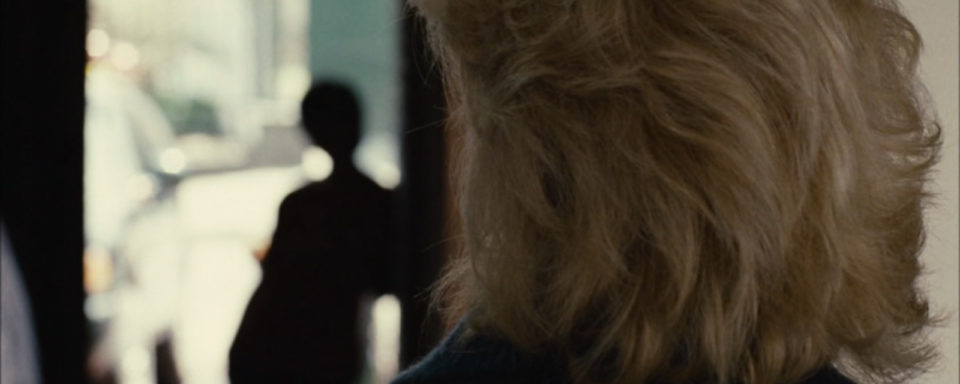
The question was more about the mise en scène in The Headless Woman. About the decision here to keep this really shallow focus so that she is in focus but everything around her is soft.
Actually, while I was writing the script I gave a lot of thought to whether she needed to be in focus and the background faded, or the other way around. I ended up having a mix of some scenes where she is clearly in focus and everything else isn’t and vice versa. I really liked having some scenes where the background came in as a ghost. The bottom line is that I did give a lot of thought to this focus issue as I was working on the film. When you watch films in general, I just hate it when people keep shifting their focus in front of you. I find that very disturbing visually. I set it out beforehand, because I don’t want to keep shifting…
You mean during a single shot?
During a single shot. So I just set my camera and keep the same focus for the entire shot. Sometimes we do change the focus, but we keep focused on one character only, and we may get closer or farther from that one character, but we don’t keep shifting from one character to another. Really I don’t like to see the shifting of focus between characters. I guess it’s also connected to the structuring layers of my films.
I would have to see the film again to make sure of this, but I don’t think that there are any subjective shots.
No, there aren’t.
And not in either of your other films. Is that the case?
It’s the way I deal with the camera. For me, the camera is like another character, so I cannot put it in the place of somebody who’s already in the film. For that reason, I place my character in a position where realistically a person could be. For example, if I’m shooting a car, I would never place it on the front part of the car, because that’s not where a person could be. I always put it inside the car. In this specific film, sometimes I have to put it outside of the car because it just doesn’t fit… but the feeling you have is that it’s inside the car. I believe my way of placing the camera shapes the film a lot. Whether you like it or not, you always have the feeling as a spectator that you are part of the action. And that’s the same reason that I don’t use establishing shots or transition shots. I find that they are very anonymous devices. I like to think that the camera is actually somebody who is physically there, like a creature, and it’s somebody who is very curious, with no moral judgment. Somebody who is not scandalized by what they see.
So do you think of this being like what documentarians call “fly on the wall”?
No it isn’t, because a fly doesn’t have a will, it doesn’t have a point of view, a personality, and in my films the camera is like a character. It is specifically like another person. For example, sometimes if there is a sound off screen, the camera moves, and it’s as if somebody was watching and all of a sudden they hear a sound and so they’re distracted and they follow the sound. And that’s what I try to do with my camera. And a fly would never do that.
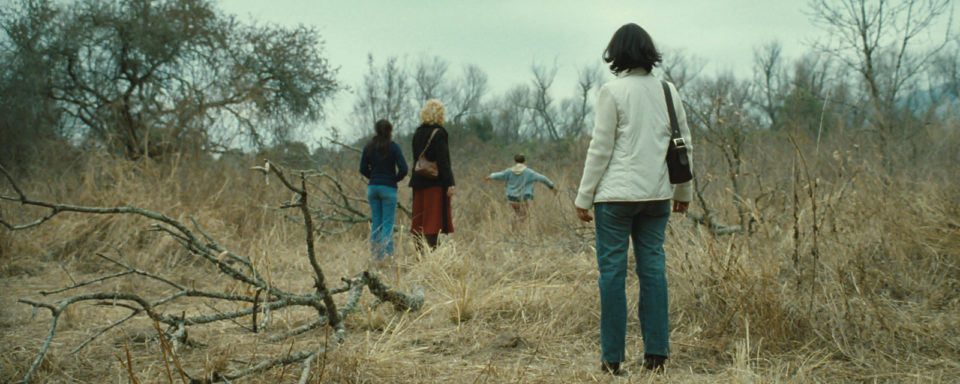
So, on a certain level, do you think of the camera as you—you are there?
Yes, it’s me, but it’s not me as I am now, it’s a character who is younger than I am. Much, much younger.
Why?
First of all, because as I get close to the camera, I kind of regain that feeling of curiosity, of desire to know what’s going on, as if I was not the one who’s written the script. Basically, the idea is that because I’ve written the script I already know what’s going on, but during filming I want to have the attitude of somebody who doesn’t already know what happens. I believe that for me, and for all directors I think, it’s very important to be guided by an element of desire, not only for the scene itself or for subject matter but curiosity about the actors, because otherwise it’s really hard to know how to film them. To me, all those elements are easier to place—the elements of desire, of curiosity, of lack of judgment—if I think of the camera as a 10-year-old child. But if you’re asking me if when I was 10 I’d already thought of filming: no I hadn’t.
I think that in part accounts for why the films feel so immediate. That’s a really, really interesting thing…
It’s really incredible how the use of the camera changes if you’re informed by this way of thinking. For me, even the shape of the camera itself, which looks like a small monster, is very relaxing and tranquilizing for me, and it allows me to organize the entire frame during the shooting. There is something monstrous about filmmaking. Actually the set itself has a specific shape. I mean that you’re like a monster with tentacles—you have the microphone, you have the camera, you have the light, you have all the cables going all over the place, all these things that get out of your body, and it’s like you’re embracing the set itself. You’re like a tumor that wraps around something that’s so vital and full of life. And I find that to be a lot of fun.
Like an octopus?
Like a hungry octopus.
Has the film been shown in Argentina yet?
Actually, we’re facing a very difficult situation as far as getting this type of film out in my country. It’s incredible, because in Argentina, over 120 films are made every year, but we do not have an adequate distribution mechanism. These films are shown in the same theaters where all the big commercial films are shown, and of course they can’t compete with titles such as Shrek or Batman. It’s a totally different type of audience, and we’re not set up to deal with that. So we have great production but it doesn’t get seen. And it’s very strange because we are very smart in football. For football, we have big stadiums, but we also have smaller ones, and we have schools.
Only one other question: when I interviewed you for The Holy Girl, I think you said something about one of your future projects being more or less science fiction…?
When I brought The Holy Girl here, I was actually in the process of writing a horror film. I got about halfway through the script and I just realized that there was an issue that I needed to fix in that script and that would have taken me a very, very long time. So at the same time I was also working on the script for this film, The Headless Woman, and as it was already far more advanced I figured I would finish this one first and then move back to the other one. And now that the time has come for me to go back to the horror-film project, I have been offered the opportunity to work on another film, which is an adaptation of a mythical little story that we have in Argentina. It’s about an alien invasion, and I am really excited about that, and I’ve started working on it. It’s based on a comic strip, probably the most popular one in Argentina. There are a lot of fans of this comic strip who are disgusted that I would be the one that is going to work on it.
It’s really weird because for this particular comic strip, which takes place in the Fifties, most fans are over 30. There have been many reprints of it, so a lot of young people got interested, but actually the core fan base is older people. This is going to be the first cinematic adaptation. It’s called El eternauta. In English it’s Sailor of Eternity.




